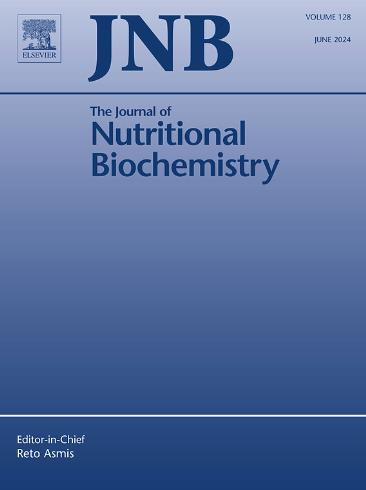6-shogaol, a bioactive component of ginger, alleviates aging-induced ocular inflammation and ER stress in the 25-month-old mice
IF 4.8
2区 医学
Q1 BIOCHEMISTRY & MOLECULAR BIOLOGY
引用次数: 0
Abstract
In the elderly population, age-related macular degeneration (AMD) is a major cause of visual impairment, characterized by a thinner retinal pigment epithelium and loss of photoreceptors. 6-shogaol (6S), a component of dried Zingiber officinale Roscoe, has been studied for its multiple therapeutic effects. The current study aimed to investigate the effect of 6S supplementation on AMD. 25-month-old C57BL/6 mice were orally administered with 10 mg/kg of 6S for 28 consecutive days. The thickness of the retinal layer was measured by histological analysis. mRNA expression related to fibrosis, inflammation and endoplasmic reticulum stress was measured by real-time polymerase chain reaction. As a result, 6S increased the thickness of the retinal layer and promoted postsynaptic density protein-95 expression in the outer plexiform layer of the aged mice. Moreover, 6S suppressed ocular mRNA expression related to the fibrotic process, including transforming growth factor beta, collagen type 1 alpha 1, and alpha smooth muscle actin. Furthermore, 6S reduced pro-inflammatory cytokines including tumor necrosis factor alpha, interleukin 1 beta, cyclooxygenase-2, and inducible nitric oxide synthase in the eyeballs of aged mice. Lastly, 6S inhibited ocular endoplasmic reticulum stress measured by mRNA expression of C/EBP homologous protein and spliced X-box binding protein-1 in the aged mice. Taken together, these findings suggest that 6S and dried ginger could be a potential nutraceutical candidate for AMD or other age-related eye diseases.
生姜的生物活性成分6-shogaol可减轻25月龄小鼠衰老引起的眼部炎症和内质网应激。
在老年人中,年龄相关性黄斑变性(AMD)是视力障碍的主要原因,其特征是视网膜色素上皮变薄和光感受器丧失。6-shogaol (6S)是干姜中的一种成分,因其具有多种治疗作用而被研究。本研究旨在探讨补充6S对AMD的影响。25月龄C57BL/6小鼠口服6S 10 mg/kg,连续28天。通过组织学分析测定视网膜层厚度。实时聚合酶链反应检测与纤维化、炎症和内质网应激相关的mRNA表达。结果表明,6S增加了老龄小鼠视网膜层厚度,促进了突触后密度蛋白-95在外丛状层的表达。此外,6S还抑制了眼部与纤维化过程相关的mRNA表达,包括转化生长因子β、1型胶原α 1和α平滑肌肌动蛋白。此外,6S还能降低衰老小鼠眼球的促炎细胞因子,包括肿瘤坏死因子α、白细胞介素1 β、环氧化酶-2和诱导型一氧化氮合酶。最后,通过C/EBP同源蛋白和剪接的X-box结合蛋白-1的mRNA表达,测定6S对老年小鼠眼内质网应激的抑制作用。综上所述,这些发现表明,6S和干姜可能是治疗黄斑变性或其他与年龄有关的眼病的潜在营养品。
本文章由计算机程序翻译,如有差异,请以英文原文为准。
求助全文
约1分钟内获得全文
求助全文
来源期刊

Journal of Nutritional Biochemistry
医学-生化与分子生物学
CiteScore
9.50
自引率
3.60%
发文量
237
审稿时长
68 days
期刊介绍:
Devoted to advancements in nutritional sciences, The Journal of Nutritional Biochemistry presents experimental nutrition research as it relates to: biochemistry, molecular biology, toxicology, or physiology.
Rigorous reviews by an international editorial board of distinguished scientists ensure publication of the most current and key research being conducted in nutrition at the cellular, animal and human level. In addition to its monthly features of critical reviews and research articles, The Journal of Nutritional Biochemistry also periodically publishes emerging issues, experimental methods, and other types of articles.
 求助内容:
求助内容: 应助结果提醒方式:
应助结果提醒方式:


